The Hutchinson Environmental Program, named in honor of G. Evelyn Hutchinson, the father of modern ecology, supports the environmental priorities identified in Yale’s strategy to advance the sciences. The program aims to enable creative collaborative research in the environmental sciences at Yale by facilitating the development of diverse academic excellence at the postdoctoral level. This format develops the framework established by the first Hutchinson call (from Fall 2019) by segueing the program into an annual and continuing program. These are two-year postdoctoral fellowships (contingent on success in year one) with a starting salary of $65,000, plus up to $10,000 for research and travel. Funds will also be available to support cohort projects, symposia, workshops, and training in science communication.
2022 - 2024 Research Clusters
Click on one of the boxes below to learn about the research themes and corresponding Yale faculty mentors.
- Cluster I - Deep Learning and Image Processing for Transformational Environmental Science
-
This cluster focuses on the application of Image Processing and Machine Learning to a range of problems in Environmental/Ecological Sciences. High-resolution imaging sensing has enabled the production of huge amounts of data that is informationally-dense and relatively easy to share. A number of promising opportunities exist to leverage these. Using traditional image processing techniques such as object detection and segmentation, for example, a wide range of modelling activities can be performed in order to quantify various aspects of plants and animals such as for phenotyping or other classification activities. Furthermore, with the increased proliferation of high quality and inexpensive sensors comes a proportional increase in the amount of data from them that must be analyzed. There are a number of directions at the intersection of machine learning and signal processing that are very promising, allowing functions such as automatically “filtering” datasets (such as to remove uninteresting clips), processing for automatic ID of animals, and many more.
Project I - Deep Learning for Automated Plant Phenotyping
Climate-related phenotypic changes in plants are perhaps most prevalent in leaves, where evapotranspiration, temperature regulation, and photosynthetic intensity are adjusted with changes in leaf appearance, such as size, shape, length to width ratio, and apex, base, lobing, and tooth form. This project would leverage Herbarium digitization efforts, which, over the past two decades have resulted in the availability of millions of images of herbarium specimens. Using these collections, we will apply modern computer vision and data-driven machine learning approaches to automatically extract leaf contours and quantify their phenotypic properties. By assembling large datasets of extracted phenotypes with their corresponding climate data, we will perform large-scale analysis of correlations between leaf phenotypes and climate conditions at massive and unprecedented taxonomic and geographic scales.

Affiliated Faculty

Aaron Dollar (Primary Advisor)
Professor of Mechanical Engineering & Materials Science & Computer Science, School of Engineering & Applied Science
Prof. Dollar is a roboticist with interests in the ways that tools from a range of applied computing areas (e.g. machine learning, image and signal processing, sensing, and robotics) can be applied to a broad range of problems in Ecology, Environmental Science, and Evolutionary Biology. Prior and ongoing work has focused on functional morphology of hands and grasping (in humans, non-human primates, and birds), and current work focuses on use of drones for environmental monitoring as well as machine learning for automated classification of herbaria specimens.
Collaborators:
Dr. Nelson Rios
Head of Biodiversity of Informatics Research, Yale Peabody Museum
Dr. Patrick Sweeney
Senior Collections Manager, Botany, Yale Peabody Museum
Project II - Texture Based Analysis of Environmental Image Data
Textural information in images can provide a rich suite of information about the content that isn’t immediately apparent from simpler image characteristics such as color or saturation. This theme includes two projects related to texture: 1) Correlating animal health metrics - texture in images, such as from a trap camera campaign, to information about the health of the individual animals documented. 2) Remote sensing landscapes - Differentiating plantation vs natural forest regeneration in tropical forest landscapes from satellite images, for instance, is not yet possible through traditional approaches. Texture-based approaches can likely resolve remote sensing images to a much greater extent than currently possible.
Affiliated Faculty
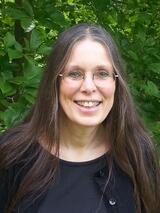
Holly Rushmeier (Primary Advisor)
John C. Malone Professor of Computer Science, Yale University
My research is in the development and application of methods for generating photorealistic computer graphics imagery. My group works on imaging for documentation and analysis of both cultural and natural heritage. We extract models of texture and geometry from images and use realistic synthetic images in machine learning for image interpretation.

Liza Comita
Professor of Tropical Forest Ecology, Yale School of the Environment
Co-Director, Yale Center for Natural Carbon Capture
My research addresses both fundamental and applied questions in the field of plant community ecology, with an emphasis on understanding the drivers of biodiversity in both intact and human-altered forest ecosystems. Much of my research focuses on forest understory dynamics and species coexistence in tropical tree communities. In my lab, we use a variety of approaches to address our research questions, including long-term observational studies, field and greenhouse experiments, and computer simulations.

Nyeema Harris
Knobloch Family Associate Professor of Wildlife and Land Conservation, Yale School of the Environment
Director, Applied Wildlife Ecology (AWE) Lab
Harris’s research explores carnivore behavior and movement, ecology and conservation in urban systems and national parks at a global scale with ongoing projects throughout the Americas and Africa. Her work focuses on the myriad of nature’s antagonisms including parasitism, competition, human-wildlife conflict, and predation. She examines spatial and temporal variations in species interactions, how interactive networks are structured, and the ecological consequences of species loss and land-use change.
- Cluster II - Trophic Ecology of African Savannas
-
African savanna ecosystems are at the brink of an ecological transformation. Woody plants are encroaching due to changes in fire management, forcing by climate and [CO2], and misguided afforestation schemes. Fire – an integral part of grassy systems, often conceptualized as another ‘consumer’ of productivity – is decreasing in extent. Wild megafauna faces increasing pressures from fragmentation, hunting, and infectious disease, threatening the last extant community of large herbivores on Earth. Meanwhile, proponents of natural climate solutions increasingly identify these diverse and ancient savanna ecosystems as ‘degraded’ and have targeted them for afforestation and transformation (billed as ‘restoration’), accelerating threats from global change and agricultural transformation. These proposals have gained traction, just as they have marginalized local communities and scientists. This cluster aims to create a community of African ecologists at Yale, bringing together three research groups interested in trophic interactions in African savanna ecosystems and recruiting postdocs to create a cluster for the study of African savanna ecology.
Affiliated Faculty
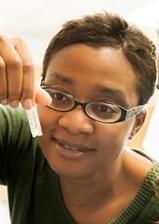
Vanessa Ezenwa
Professor of Ecology & Evolutionary Biology
Vanessa Ezenwa is a disease ecologist who investigates the drivers and consequences of infectious diseases in mammals, with a particular focus on African herbivores.

Jennifer Marlon
Research Scientist and Lecturer, Yale School of the Environment and Yale Program on Climate Change Communication
Jennifer Marlon is a Quaternary paleofire ecologist with extensive experience in synthesizing paleoecological records to evaluate regional-scale fire dynamics.
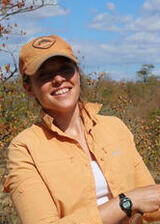
Carla Staver
Associate Director, Yale Institute for Biospheric Studies
Associate Professor of Ecology & Evolutionary Biology
Carla Staver is an ecologist with a long-standing interest in how fire and herbivory influence the distribution, structure, and dynamics, especially of tropical savanna vegetation.
- Cluster III - The Genomic Basis of Climate Resiliency
-
Current climate models predict more extreme and variable temperature and precipitation regimes, and hotter, more extreme droughts are a leading cause of widespread forest mortality. Despite their central role in plant ecological adaptation, potential variation in complex physiological processes such as drought tolerance are rarely surveyed at a population level. Furthermore, we know very little about either the genetic basis or potential plasticity of plant drought tolerance. This is problematic, because if and how species will adapt to climate change depends in large part on the amount and distribution of genetic variation for ecologically relevant traits. This project seeks to bridge global ecology and evolutionary genetics by exploring the genetic architeture and within species variation of plant drought tolerance.
Affiliated Faculty

Craig Brodersen
Professor of Physiological Plant Ecology, Yale School of the Environment
My lab group is focused on structure-function relationships in the transport systems in plants; specifically, the vascular systems and their linkage to the evaporative and absorptive surfaces in leaves. We use a combination of methods, including high-resolution X-ray microCT imaging, to study these systems in three-dimensions and in-planta as a means of characterizing physiological thresholds during stressful events like drought. Another long-term goal of our research program is to understand how the natural diversity in photosynthetic and hydraulic systems of plants might be used for the design of novel materials and designs to mitigate rising atmospheric CO2.
Jennifer Coughlan
Assistant Professor of Ecology & Evolutionary Biology
The Coughlan lab seeks to understand the process of speciation and adaptation by integrating field work, common garden experiments, development, and quantitative and population genomics. We focus on a wild flower genus, Mimulus.
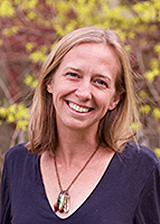
Erika Edwards
Professor of Ecology & Evolutionary Biology
Curator-in-charge of Botany and Paleobotany, Yale Peabody Museum
Director, Marsh Botanical Gardens
My lab group studies the evolutionary origins of complex trait syndromes in plants. We are especially drawn to traits that result from convergent evolution: phenotypes that have arisen many times, in distantly related lineages and within different evolutionary contexts. Our approach is centered on the concept of developing “model lineages” for macroevolution. Our work is highly integrative, and we are typically engaging in some combination of phylogenetics, physiology, anatomy, genomics, and field ecology to answer our questions. We tend to focus on traits that have played especially prominent roles in the adaptation of plant lineages to novel environments. For example, we have worked for some time on the evolution of different photosynthetic systems in plants, and how their evolution is connected to the global carbon cycle. We are also interested in evolutionary transitions between tropical and temperate forests, and between desert and alpine environments. - Cluster IV - Mechanisms and Trajectories of Post-Disturbance Recovery in Tropical Forests
-
Tropical forests hold over half of the world’s biodiversity and play a critical role in regulating Earth’s climate, but also face some of the highest rates of land-use change. More than half of the world’s tropical forests are currently in a state of recovery following human disturbance. This includes secondary forests undergoing sucessions after deforestation for agriculture, as well as mature forests recovering from degradation from logging or recent shifts in fire regimes. While understanding the trajectories of recovery is critical for conservation and climate mitigation, two outstanding questions remain largely unanswered. First, how below and aboveground feedback influence forest recovery pathways and their biodiversity trajectories. Second, how environmental and biological filters shape forest vulnerability to compounding disturbance events associated with droughts, blowdowns, wildfires, and edge effects. Addressing these questions will advance our understanding of underlying biotic mechanisms driving successional dynamics and the potential consequences for forest functioning and biodiversity.
Affiliated Faculty

Paulo Brando
Associate Professor of Ecosystem Carbon Capture, Yale School of the Environment
My lab group’s research aims to identify ecological thresholds beyond which global changes cause abrupt, prolonged degradation of terrestrial ecosystems by stressing, disturbing, and killing forests, and to quantify ecological & climatological boundaries for tropical agricultural expansion and intensification.
Liza Comita
Professor of Tropical Forest Ecology, Yale School of the Environment
Co-Director, Yale Center for Natural Carbon Capture
In my lab, we study the mechanisms driving patterns of plant diversity, dynamics, and species distributions in both pristine and human-altered forest ecosystems. We are particularly interested in how interactions between plants and their natural enemies (e.g. pathogens, herbivores) will be altered by human impacts on the environment (e.g. climate change, fragmentation, past land use, selective logging, hunting, etc.). We are also interested in determining the extent to which forest restoration and avoided deforestation, especially in the tropics, can contribute to climate mitigation while simultaneously enhancing biodiversity conservation and local livelihoods.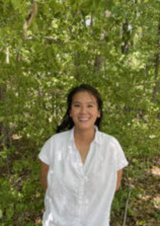
Michelle Wong
Assistant Professor of Ecology & Evolutionary Biology
Our lab is interested in how plants and microbes interact with nutrient availability to shape terrestrial ecosystem responses to global change. More specifically, how terrestrial ecosystems overcome nutrient limitation to facilitate carbon storage in plant biomass and soils, and how our findings can inform ecosystem management and restoration efforts.
2020 - 2022 Research Themes
Click on one of the boxes below to learn about the research themes and corresponding Yale faculty mentors.
- Theme I - Environment and Evolution
-
Human-accelerated environmental changes are affecting the flux of energy and nutrients in ecosystems, in many cases by altering the structure and function of species interactions. We are seeking candidates whose research addresses how species interactions are reshaped by ecological and evolutionary responses to environmental change and/or how this reshaping determines processes and patterns at larger scales. Successful applicants will work in a highly collaborative environment around themes including, but not limited to: (1) eco-evolutionary dynamics in ecosystems driven by human-accelerated change; (2) the genomic basis of evolving species interactions; and (3) contemporary effects of environmental change from a paleoecological perspective.
Faculty lead for Theme I: David Vasseur, Department of Ecology & Evolutionary Biology. Other relevant faculty are affiliated with the Yale School of Forestry & Environmental Studies, and the Departments of Earth and Planetary Sciences and Anthropology.
Affiliated Faculty
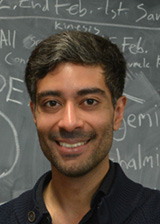
Bhart-Anjan Bhullar
Associate Professor of Earth and Planetary Sciences
Associate Curator of Vertebrate Paleontology and Vertebrate Zoology (Herpetology), Yale Peabody Museum
My group focuses on great transitions in the history of vertebrates. In the field and in the lab, we use the geological record of life to guide questions about major transformations across Vertebrata, especially at the origins of extant radiations such as (but not limited to) birds, mammals, tetrapods, and gnathostomes. To address the nature and mechanism of pivotal events at crucial points in evolutionary history, we bring to bear a full range of modern biological and geological techniques, especially molecular developmental biology and functional biology, coupled with advanced three-dimensional imaging and geometric analysis.
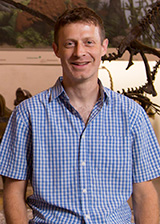
Mark Bradford
Professor, Soils and Ecosystem Ecology, Yale School of the Environment
Our lab focuses on understanding how organismal responses to environmental change influence terrestrial carbon cycle processes. As an example, one of our current projects is investigating how fungal-fungal interactions and plasticity are shaped by micro- and macroclimatic variables, and how in turn these fungal community outcomes then drive macroscale patterns in decomposition rates under changing climate. Ultimately, we aim to provide the necessary mechanistic understanding required for reliable prediction of global change impacts on ecosystems, and their likely feedbacks to the climate system. We are particularly interested in working with applicants motivated to incorporate ecological and evolutionary processes into soil biogeochemical models, to test impacts on carbon fluxes and stocks.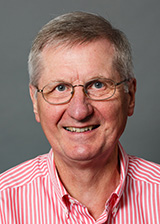
Derek E.G. Briggs
G. Evelyn Hutchinson Professor of Earth and Planetary Sciences
Curator-in-charge of Invertebrate Paleontology, Curator of Invertebrate Zoology, Yale Peabody Museum
YIBS Director from 2004-2008
My research interest is in the preservation and evolutionary significance of exceptionally preserved fossil biotas. The fossil record has acquired an importance as the best guide to the likely impact of climate and other human driven environmental changes – not least in the new field of conservation paleobiology. To understand what it reveals, however, it is essential to understand how marine communities and organism interactions are represented in the fossil record and how changes are reflected in environmental trends and patterns.
Adalgisa Caccone
Senior Research Scientist and Lecturer, Department of Ecology & Evolutionary Biology
My lab conducts population and individual level DNA analyses to study the evolutionary and ecological processes that shape genomic diversity and translate this information in applied contexts. Our major areas of interest are vector and conservation population genetics/genomics. In both cases we are interested in these main topics: (1) integrating genomic and environmental data to understand the role of climatic changes in shaping species range fluctuation and inter-species interactions, (2) develop novel methods to better predict how species will be impacted by anthropogenic effects, (3) understanding the genetic architecture of complex traits involved in adaptation to novel environment, (4) analyzing the evolution of species interactions, specifically the co-evolution of vectors, hosts, and parasites in face of novel environmental challenges, (5) urban ecological genetics.
Liza Comita
Professor of Tropical Forest Ecology, Yale School of the Environment
Co-Director, Yale Center for Natural Carbon Capture
In my lab, we study the mechanisms driving patterns of plant diversity, dynamics, and species distributions in both pristine and human-altered forest ecosystems. We are particularly interested in how interactions between plants and their natural enemies (e.g. pathogens, herbivores) will be altered by human impacts on the environment (e.g. climate change, fragmentation, past land use, selective logging, hunting, etc.). We are also interested in determining the extent to which forest restoration and avoided deforestation, especially in the tropics, can contribute to climate mitigation while simultaneously enhancing biodiversity conservation and local livelihoods.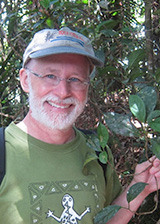
Michael Donoghue
Sterling Professor Emeritus of Ecology & Evolutionary Biology
YIBS Director from 2019-2021
My lab has conducted phylogenetic and field studies of mutualistic species interactions, including flowers and their pollinators, fruits and their dispersal agents, and leaves and their protective arthropods. As one example, in our studies of the hobblebush (Viburnum lantanoides) we noted mis-matches during the early spring in flower opening and pollinator emergence (Park et al., 2019), and we would love to understand how climate change is influencing the timing of these critical events.
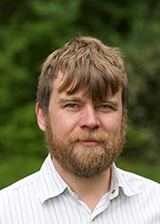
Casey Dunn
Professor of Ecology & Evolutionary Biology
Curator-in-charge of Invertebrate Zoology and Informatics, Yale Peabody Museum
Our lab studies the evolution of genomes, development, morphology, and natural history. Our work is centered on organisms, and marine animals in particular. We address questions at larger spatial scales, such as how organism traits impact food web structure, and at smaller spatial scales, such as how genomic changes lead to phenotypic changes.

Erika Edwards
Professor of Ecology & Evolutionary Biology
Curator-in-charge of Botany and Paleobotany, Yale Peabody Museum
Director, Marsh Botanical Gardens
My lab group studies the evolutionary origins of complex trait syndromes in plants. We are especially drawn to traits that result from convergent evolution: phenotypes that have arisen many times, in distantly related lineages and within different evolutionary contexts. Our approach is centered on the concept of developing “model lineages” for macroevolution. Our work is highly integrative, and we are typically engaging in some combination of phylogenetics, physiology, anatomy, genomics, and field ecology to answer our questions. We tend to focus on traits that have played especially prominent roles in the adaptation of plant lineages to novel environments. For example, we have worked for some time on the evolution of different photosynthetic systems in plants, and how their evolution is connected to the global carbon cycle. We are also interested in evolutionary transitions between tropical and temperate forests, and between desert and alpine environments.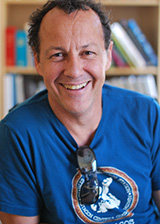
Eduardo Fernandez-Duque
Professor of Anthropology
I study the behavior, life history and population biology of primates in South America. Our studies in the Amazon forests of Ecuador and the Argentinean Chaco have contributed to understanding the hormonal, genetic and ecological factors driving the evolution of monogamous mating systems. We look forward to exploring how long-term changes in forest structure, phenology and climate are influencing the population biology of these species and their competitors.
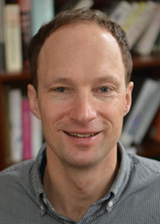
Walter Jetz
Professor of Ecology & Evolutionary Biology and Forestry and Environmental Studies
Work in our group addresses the patterns and processes behind the distribution of species and their traits in space and time. We are particularly interested in the scale-dependence of both evidence and mechanism in biodiversity science and how environment, ecological, and macroevolutionary mechanisms combine to determine the co-occurrence of species and the structure of assemblages. We aim to use this as basis for assessing the fate of biodiversity and its functions under global change. We work with a variety of systems, both animals and plants, but have to date been particularly active addressing birds and terrestrial vertebrates.
Martha Muñoz
Assistant Professor of Ecology & Evolutionary Biology
Assistant Curator of Vertebrate Zoology (Herpetology), Yale Peabody Museum
The Muñoz lab studies how organisms behaviorally interact with their environments and how those interactions impact micro- and macroevolutionary patterns of diversity. We use our discoveries to make informed predictions of species’ vulnerability to ongoing global change. Some ongoing research themes in the lab are: (1) mechanisms of niche evolution; (2) ecological and evolutionary physiology; (3) spatial patterns of biodiversity; (4) form-function evolution; and (5) behavioral evolution. The Muñoz lab works primarily with terrestrial ectotherms (especially reptiles and amphibians), but is open to other study systems.
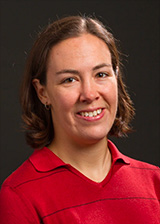
Virginia Pitzer
Associate Professor of Epidemiology (Microbial Diseases), Yale School of Public Health
My lab focuses on mathematical and statistical modeling of infectious diseases, with a particular focus on examining the impact of vaccination and other interventions on pathogens such as typhoid, rotavirus, and respiratory syncytial virus. We are interested in examining how environmental factors and climate change drive patterns of infectious disease incidence (see Metcalf et al, 2019), and how this may interact with the ecology and evolution of pathogens.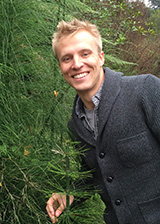
Noah Planavsky
Associate Professor of Earth and Planetary Sciences
Associate Curator of Mineralogy & Meteoritics, Yale Peabody Museum
My lab studies global biogeochemical cycles and how they have changed through time. We are particularly interested in reconstructing the evolution of the extent and scope of the biosphere, and how this has been (and will be) impacted by climate perturbations. We also study how and why atmospheric oxygen, methane, and carbon dioxide concentrations have changed over Earth’s history.
David M. Post
Professor of Ecology & Evolutionary Biology
The Post Lab studies the influence of environmental change on communities and ecosystems, eco-evolutionary dynamics, spatial linkages among ecosystems, and complex food web structure and dynamics. We develop and apply stable isotope techniques, and utilize a range of approaches including whole-ecosystem experiments, comparative and paleoecological studies, and meta-analyses to address fundamental and applied questions across ecology and evolutionary biology.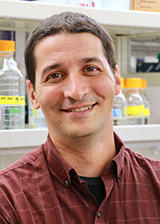
Alvaro Sanchez
Assistant Professor of Ecology & Evolutionary Biology
The Sanchez lab investigates the assembly and evolution of microbial communities. Our research combines mathematical and computational modeling and quantitative experiments to link metabolic and molecular processes with population-level behavior. Our ultimate goal is to develop a quantitative predictive theory of microbiome assembly and its ecological and evolutionary dynamics.
Oswald Schmitz
Oastler Professor of Population and Community Ecology, Yale School of the Environment and the Department of Ecology & Evolutionary Biology
YIBS Director from 2011-2018
My lab group works on the evolutionary ecology of ecosystem functioning. Our research is situated at the nexus of environmental change and ecosystem functioning, examined through the lens of how adaptive responses of organismal functional traits influence food web interactions and ecosystem functions such as nutrient and carbon cycling across broad landscapes. We hope to advance understanding of how variation in the expression of the suite of traits deployed by predators and prey link to variation in ecosystem carbon cycling.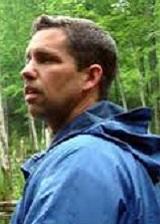
David Skelly
Frank R. Oastler Professor of Ecology, Yale School of the Environment
Professor of Ecology & Evolutionary Biology
Director, Yale Peabody Museum
Our lab studies the ecological and evolutionary influences of environmental change on animal populations. We are particularly interested in the means by which species cope with human caused changes such as landscape conversion, the introduction of synthetic chemicals or changing climate. To what extent are persisting species adapting to altered environments and how quickly and at what spatial scales can such adaptation occur? We use long term observations as well as field and laboratory experiments to link pattern to mechanism and we seek understanding that can help us make better decisions about the environment. A lot of the work is on frogs because they live in such a variety of contexts and because they are cool.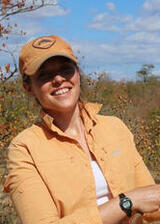
Carla Staver
Associate Director, Yale Institute for Biospheric Studies
Associate Professor of Ecology & Evolutionary Biology
Our lab studies how climate, soils, fire, and herbivory interact with vegetation to determine vegetation distributions and dynamics in the Earth system. We focus on savanna and forest ecosystems especially in the tropics, combining field and remote sensing approaches with theoretical and computational modeling to understand mechanisms and generate rigorous predictions for the future of the biosphere.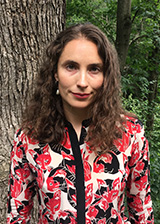
Lidya Tarhan
Assistant Professor of Earth and Planetary Sciences
Assistant Curator of Invertebrate Paleontology, Yale Peabody Museum
My lab’s research focuses on using the sedimentary record to reconstruct the co-evolution of ancient life and environments during critical intervals of Earth’s history. I also study the environmental factors controlling animal-sediment interactions in modern marine settings. My research approach combines field-based sedimentological and (paleo)ecological investigations with a geochemical-, petrographic- and modeling-based toolkit. My recent work has centered on reconstructing the environmental settings and ecology of the earliest animal ecosystems, tracking the emergence of bioturbating (burrowing and sediment-mixing) animals as ecosystem engineers and constraining quantitative relationships between bioturbation and microbial redox cycling in modern coastal sediments.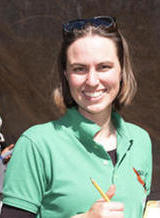
Jessica Thompson
Assistant Professor of Anthropology
Assistant Curator of Anthropology, Yale Peabody Museum
I am a paleoanthropologist who specializes in analysis of animal remains from hominin sites. In the Paleoarchaeology Lab, we examine ancient human-environment interactions primarily using fossil and subfossil evidence. My backgrounds in taphonomy, GIS, and field archaeology serve me in two major projects. The first, in Ethiopia, is an examination of how our Pliocene hominin ancestors first moved into a more omnivorous niche, and what the evolutionary consequences were of this behavior. The second, in Malawi, is an investigation of changing human behavior and concurrent paleoenvironmental changes across the Pleistocene-Holocene boundary. I have recently begun to move more deliberately into research that examines the recursive effects of Pliocene hominins and Pleistocene humans on the ecosystems they inhabit. Members of my lab group study the paleobiogeography, taphonomy, and isotopic signatures of animal remains as the main proxies for these interactions.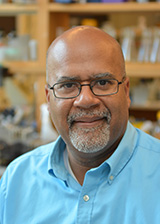
Paul E. Turner
Rachel Carson Professor of Ecology & Evolutionary Biology
My laboratory studies the ecology, evolutionary genetics and genomics of microbes, especially interacting viruses and hosts within populations and communities that evolve in changing environments. Human-accelerated environmental changes affect all biota, including microbes. Phenotypic analysis, deep-sequencing and metagenomics of microcosm experiments can illuminate eco-evolutionary dynamics, and help refine predictions of microbial evolvability in the face of environmental change, as well as estimates of extinction risks experienced by microbial species.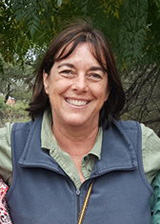
Claudia Valeggia
Professor of Anthropology
The Reproductive Ecology Lab focuses on the interaction between the environment and reproductive function in human and non-human primates. Among other questions, we are currently working on the endocrine correlates of life history transitions in women, the effects of environmental endocrine disruptors on infant development, and the association of paternal care and metabolic hormones in owl monkeys (Aotus azarai).
David Vasseur
Professor of Ecology & Evolutionary Biology
Research in my lab incorporates theory and laboratory experiments to study the ecological and evolutionary responses to environmental variation and to the variation that exists amongst individuals. Within this broader focus, two themes currently dominate my lab’s activities. The first is aimed at understanding the consequences of thermal variation in space and time on the fitness of individuals and populations. In addition to models of evolutionary rescue and behavioral microclimate use, we are carrying out experiments to better characterize the ecological effects of thermal acclimation in order to improve ecological forecasts. The second theme aims to characterize how the incorporation of intraspecific variation impacts ecological paradigms such as coexistence and the stability of ecosystems.Additional faculty members may be published at any time; please check back for updates.
- Theme II - Climate and Greenhouse Gases
-
Atmospheric levels of CO2, CH4 and N2O are increasing, leading to planetary warming. We are seeking candidates whose research can contribute to our general understanding of the generation and management of greenhouse gases (GHG). Because of growing interest in global methane among a group of Yale faculty, we are particularly interested in building a cohort of postdoctoral fellows who can advance knowledge of the production and control of CH4 losses from natural and human-managed systems. Successful applicants will work in a highly collaborative environment around themes including, but not limited to: (1) GHG fluxes from ecosystems and the energy sector; (2) microbial ecology and evolution relevant to GHGs; (3) GHG pathways in plants; (4) GHG dynamics in deep time; and (5) natural climate solutions.
Faculty lead for Theme II: Peter Raymond, Yale School of Forestry & Environmental Studies. Other relevant faculty are affiliated with the Departments of Earth and Planetary Sciences, Ecology & Evolutionary Biology, Chemical & Environmental Engineering, and the Yale School of Management.
Affiliated Faculty
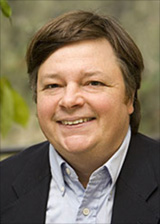
Mark S. Ashton
Morris K. Jesup Professor of Silviculture and Forest Ecology, Yale School of the Environment
Our lab group works on understanding the patterns and processes of regenerating native forests with application to the development and testing of silvicultural techniques for native forest restoration on degraded lands. As such we seek to develop resilient mitigation and adaptation strategies for reforestation in changing climates.

Mark Bradford
Professor, Soils and Ecosystem Ecology, Yale School of the Environment
Our lab focuses on understanding how organismal responses to environmental change influence terrestrial carbon cycle processes. As an example, one of our current projects is investigating how fungal-fungal interactions and plasticity are shaped by micro- and macroclimatic variables, and how in turn these fungal community outcomes then drive macroscale patterns in decomposition rates under changing climate. Ultimately, we aim to provide the necessary mechanistic understanding required for reliable prediction of global change impacts on ecosystems, and their likely feedbacks to the climate system. We are particularly interested in working with applicants motivated to incorporate ecological and evolutionary processes into soil biogeochemical models, to test impacts on carbon fluxes and stocks.
Derek E.G. Briggs
G. Evelyn Hutchinson Professor of Earth and Planetary Sciences
Curator-in-charge of Invertebrate Paleontology, Curator of Invertebrate Zoology, Yale Peabody Museum
YIBS Director from 2004-2008
My research interest is in the preservation and evolutionary significance of exceptionally preserved fossil biotas. The fossil record has acquired an importance as the best guide to the likely impact of climate and other human driven environmental changes – not least in the new field of conservation paleobiology. To understand what it reveals, however, it is essential to understand how marine communities and organism interactions are represented in the fossil record and how changes are reflected in environmental trends and patterns.

Craig Brodersen
Professor of Physiological Plant Ecology, Yale School of the Environment
My lab group is focused on structure-function relationships in the transport systems in plants; specifically, the vascular systems and their linkage to the evaporative and absorptive surfaces in leaves. We use a combination of methods, including high-resolution X-ray microCT imaging, to study these systems in three-dimensions and in-planta as a means of characterizing physiological thresholds during stressful events like drought. Another long-term goal of our research program is to understand how the natural diversity in photosynthetic and hydraulic systems of plants might be used for the design of novel materials and designs to mitigate rising atmospheric CO2.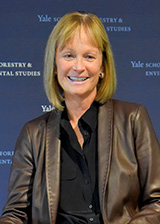
Indy Burke
Carl W. Knobloch, Jr. Dean, Yale School of the Environment
Professor of Ecosystem Ecology, Yale School of the Environment
I am an ecosystem ecologist with expertise in carbon and nitrogen cycling in semiarid ecosystems. My work with graduate students and colleagues has addressed the influence of land use management, climatic variability, and regional variability on these systems.
Liza Comita
Professor of Tropical Forest Ecology, Yale School of the Environment
Co-Director, Yale Center for Natural Carbon Capture
In my lab, we study the mechanisms driving patterns of plant diversity, dynamics, and species distributions in both pristine and human-altered forest ecosystems. We are particularly interested in how interactions between plants and their natural enemies (e.g. pathogens, herbivores) will be altered by human impacts on the environment (e.g. climate change, fragmentation, past land use, selective logging, hunting, etc.). We are also interested in determining the extent to which forest restoration and avoided deforestation, especially in the tropics, can contribute to climate mitigation while simultaneously enhancing biodiversity conservation and local livelihoods.
I am interested in the relationship between ambient temperature and humidity and adverse health outcomes, especially kidney disease. I am also interested in the benefits and harms of air conditioning in the context of health and climate change. Air conditioning is highly protective against heat-related morbidity and mortality. However, air conditioning also confers harms by contributing to peak electricity demand, greenhouse gas and particulate matter emissions, and the urban heat island effect. How do we achieve the benefits of indoor cooling while avoiding the harms?

Erika Edwards
Professor of Ecology & Evolutionary Biology
Curator-in-charge of Botany and Paleobotany, Yale Peabody Museum
Director, Marsh Botanical Gardens
My lab group studies the evolutionary origins of complex trait syndromes in plants. We are especially drawn to traits that result from convergent evolution: phenotypes that have arisen many times, in distantly related lineages and within different evolutionary contexts. Our approach is centered on the concept of developing “model lineages” for macroevolution. Our work is highly integrative, and we are typically engaging in some combination of phylogenetics, physiology, anatomy, genomics, and field ecology to answer our questions. We tend to focus on traits that have played especially prominent roles in the adaptation of plant lineages to novel environments. For example, we have worked for some time on the evolution of different photosynthetic systems in plants, and how their evolution is connected to the global carbon cycle. We are also interested in evolutionary transitions between tropical and temperate forests, and between desert and alpine environments.
Drew R. Gentner
Associate Professor, Chemical & Environmental Engineering
Associate Professor, Forestry & Environmental Studies
My research includes a focus on emissions of climate-relevant pollutants (gases and aerosols) from energy- and non-energy-related sources, and measurements of their spatiotemporal variability in the atmosphere, including using new networks such as those developed as part of Yale’s SEARCH Center.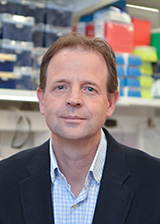
Jordan Peccia
Thomas E. Golden, Jr. Professor and Chair of Chemical & Environmental Engineering, School of Engineering & Applied Science
My lab merges microbiology and microbial genetics with computational approaches to address environmental problems in energy, climate, and human health. We are currently interested in how environmental conditions influence gene expression and regulate methanogenesis and methanotrophy in natural and engineered systems.

Noah Planavsky Associate Professor of Earth and Planetary Sciences
Associate Curator of Mineralogy & Meteoritics, Yale Peabody Museum
My lab studies global biogeochemical cycles and how they have changed through time. We are particularly interested in reconstructing the evolution of the extent and scope of the biosphere, and how this has been (and will be) impacted by climate perturbations. We also study how and why atmospheric oxygen, methane, and carbon dioxide concentrations have changed over Earth’s history.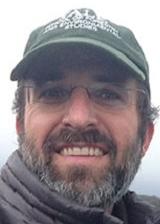
Peter Raymond
Senior Associate Dean of Research and Director of Doctoral Studies, Oastler Professor of Biogeochemistry, Yale School of the Environment
The Raymond lab studies the exchange of greenhouse gases between aquatic systems and the atmosphere. We do this through both field/lab work and regional to global scaling. For this effort we are interested in continuing our effort to increase the knowledge base on what controls methane fluxes from inundated systems and scaling these fluxes from ecosystems to the globe.
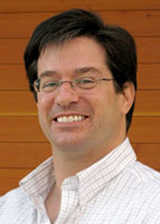
James E. Saiers
Clifton R. Musser Professor of Hydrology, Yale School of the Environment
My lab has conducted field and modeling studies of the effects of natural processes and energy-resource extraction on the fluxes of methane and other pollutants in streams, soils, and groundwater aquifers. As one example (Barth-Naftilan et al. 2018), we evaluated how hydraulic fracturing and its attendant processes affected methane concentrations in drinking-water aquifers that overly the natural-gas bearing Marcellus Shale. More generally, we are seeking to advance a process-based understanding of the spatial and temporal variability of methane exchange between different watershed reservoirs and the atmosphere.
Carla Staver
Associate Director, Yale Institute for Biospheric Studies
Associate Professor of Ecology & Evolutionary Biology
Our lab studies how climate, soils, fire, and herbivory interact with vegetation to determine vegetation distributions and dynamics in the Earth system. We focus on savanna and forest ecosystems especially in the tropics, combining field and remote sensing approaches with theoretical and computational modeling to understand mechanisms and generate rigorous predictions for the future of the biosphere.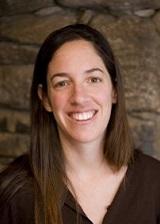
Julie Zimmerman
Professor of Green Engineering, Yale School of the Environment
Assistant Director for Research at Center for Green Chemistry and Green Engineering
Vice Provost for Yale Planetary Solutions
My lab is interested in mitigating climate change through the development of greener processes for chemical and material synthesis, particularly starting from renewable and waste feedstocks. We are particularly interested in advancing the integrated biorefinery to produce drop-in or novel chemicals that do not rely on petroleum feedstocks and synthesizing high value materials, particularly nano materials, with reduced energy demand by developing new synthetic routes and processes.Additional faculty members may be published at any time; please check back for updates.
